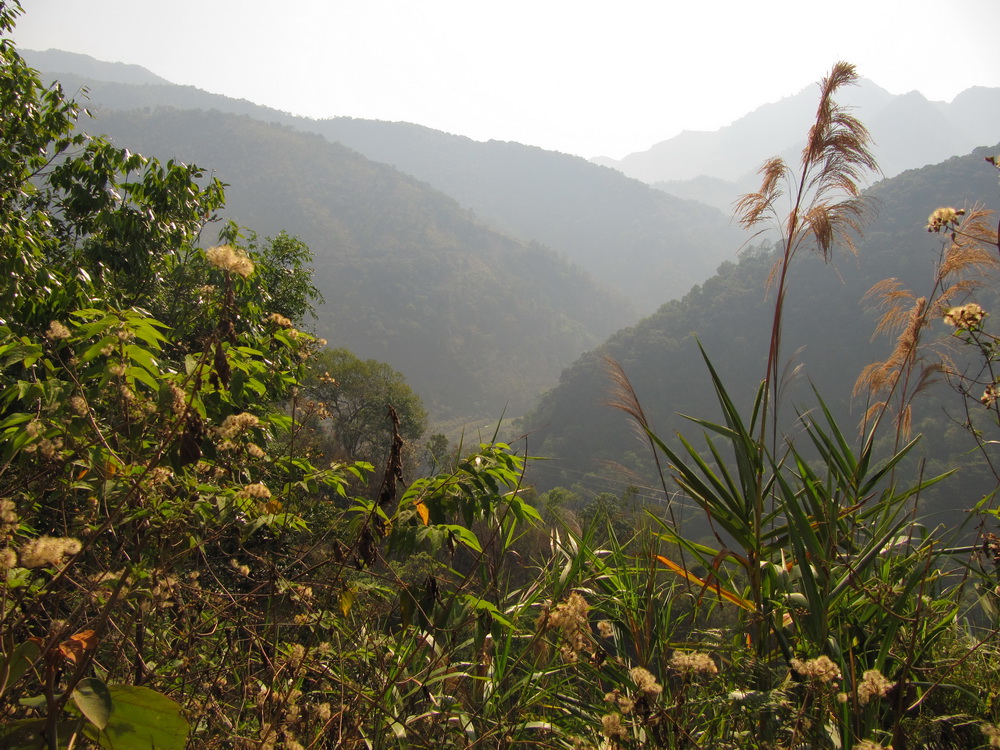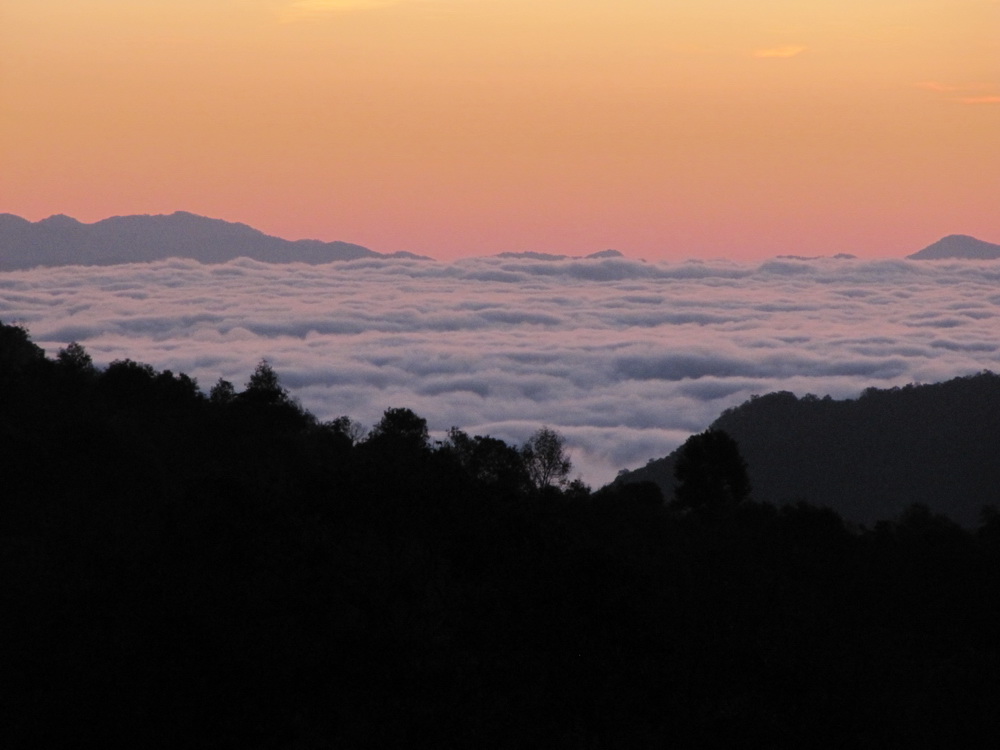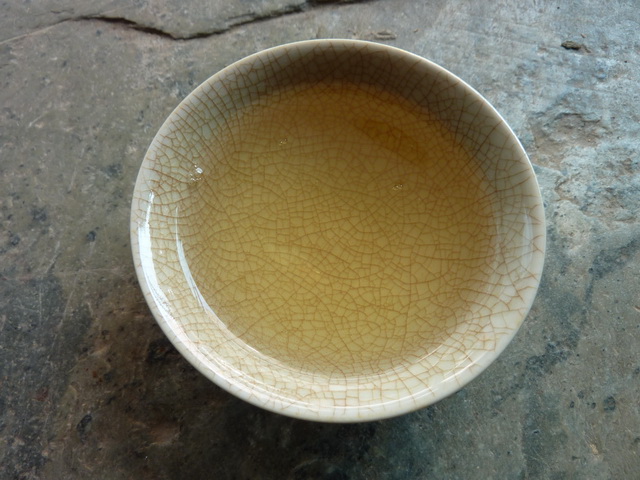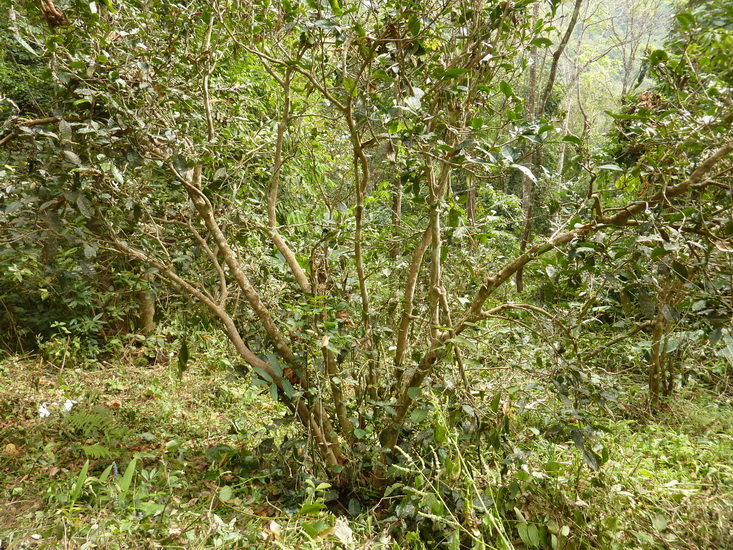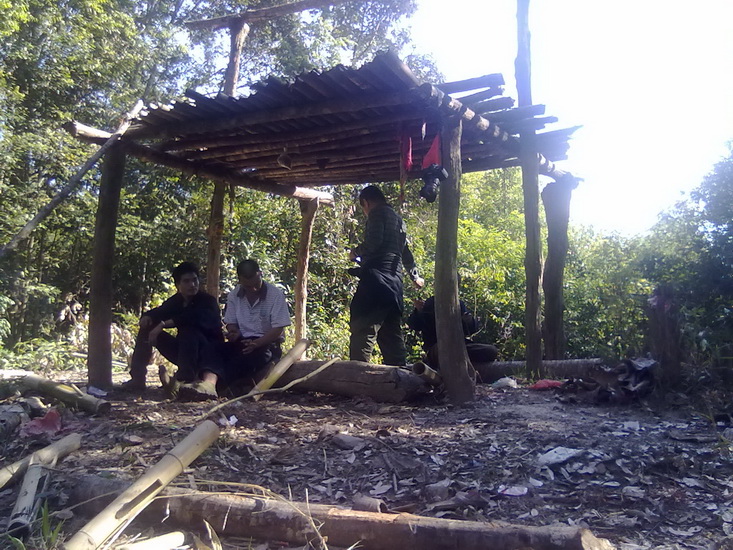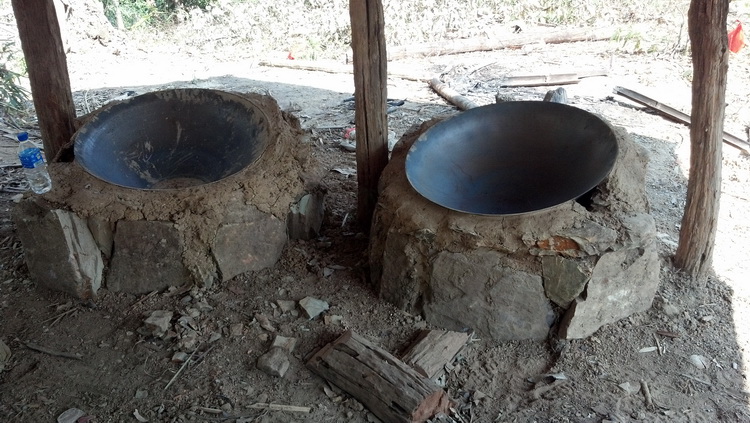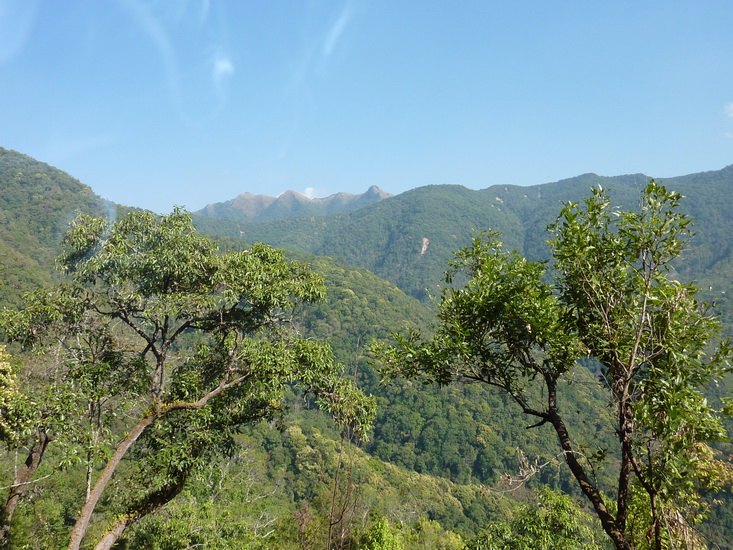I must have chosen some of the hottest, driest days of the year to take a ride on my newly acquired bike around the Six Famous Tea Mountains. It was Water Spalshing Festival or 泼水节 ‘Po Shui Jie’, Dai New Year Festival – ‘Songkran’ in Thai – which takes place around Xishuangbanna between the 13th to 15th of April.

I spent a night in Mahei before heading up to Gua Feng Zhai.The road runs alongside the San Jia River, crossing over it a couple of times. Sometimes soaring above it, then dropping back down to run alongside again for a while. One is never out of earshot of the river.
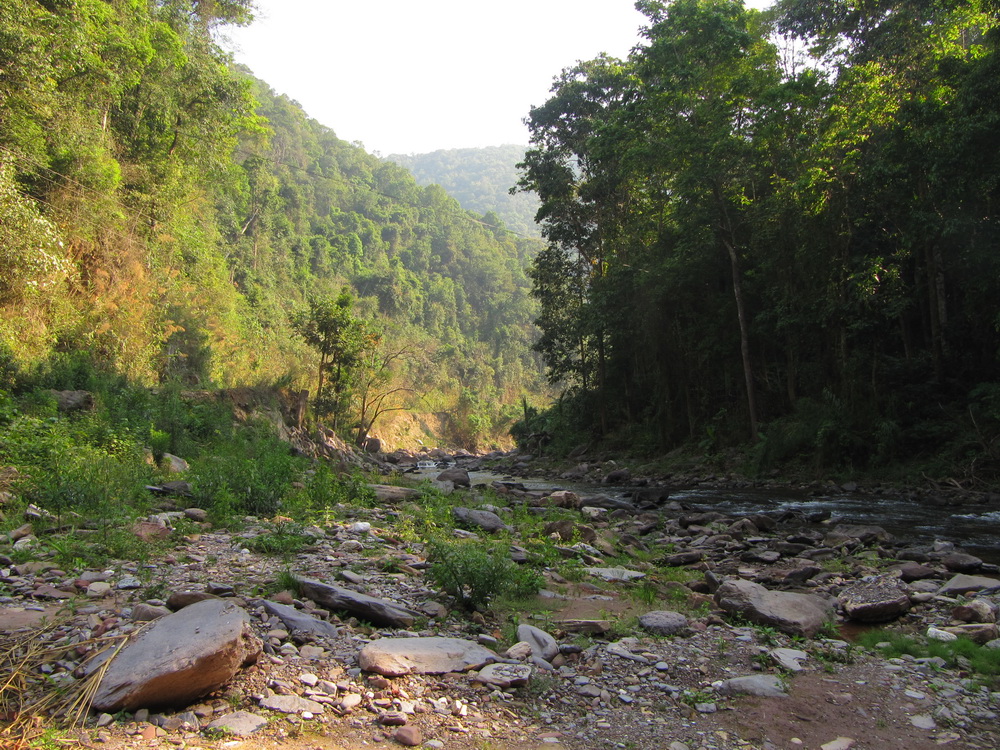
A view of the village before dropping down into Gua Feng Zhai. It is currently a little dishevelled as they have been improving the roads in the village and work has not yet been completed. The village is on the Meng Nai River which joins the San Jia He further down the valley. Meng Nai is the Yao name for Gua Feng Zhai.

There are three main tea growing areas with ancient tea trees worked by people fom Gua Feng Zhai; Bai Sha He, Cha Wang Shu and Cha Ping. Due to inherited land use and land allocation, there are many people, other than Gua Feng Zhai villagers who have trees in Cha Wang Shu. There are people in Yiwu who have land in Cha Wang Shu.
The Bai Sha He tea field below is typical of the type of ancient tea tree fields in the Gua Feng Zhai area, but they are all a good 8-10 kilometres from the village. In the immediate vicinty of the village there are only bushes/xiao shu. In this picture the trees are fairly sparse and land around them has been previously cleared. The trees are surrounded by forest. The simple low frame structures in the foreground are used to place bamboo drying trays 簸箕 (boji) on to dry tea.
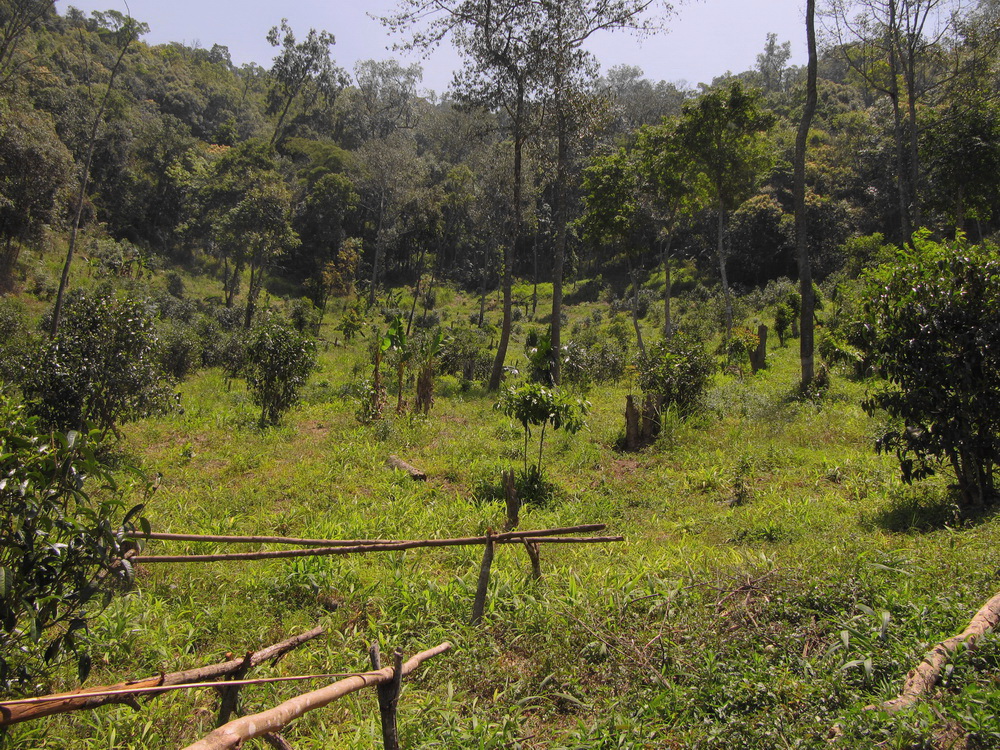
Many of the trees have a substantial base, which gives a better idea of their age but, because in the past they were cut back, they mostly have a number of more slender trunks rather than one main trunk. They still grow to significant sizes and can be 4-5 metres tall.
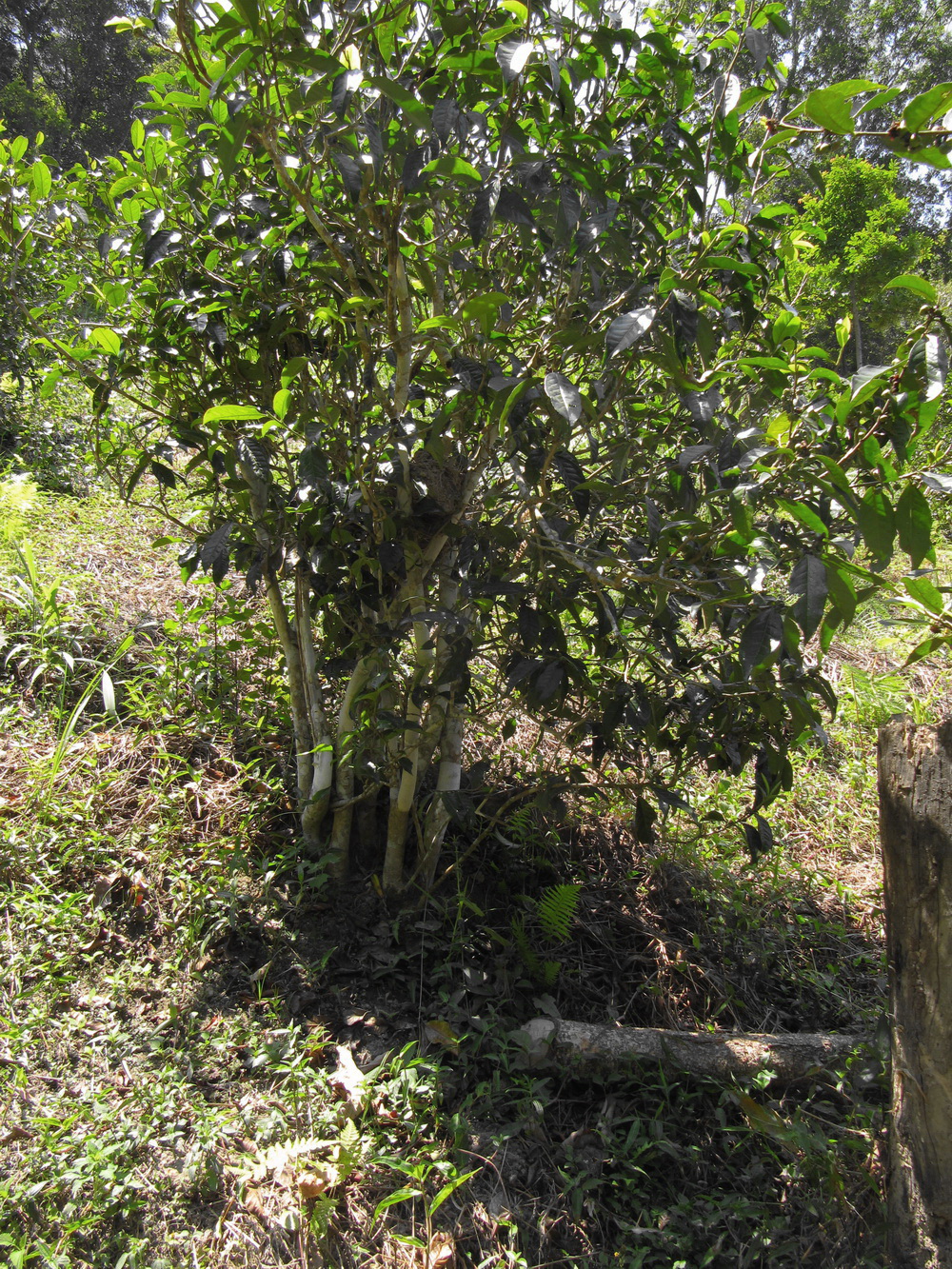
With all of these tea fields, because they are significant distances from the village, the common practice is to process the tea in the field and then carry the loose maocha out.
Here is a photo looking across from Bai Cha Yuan towards Cha Wang Shu (the mountain to the right). From here it is is a further 2 hour walk to Cha Wang Shu. It is a little more accessible from the other, Gua Feng Zhai, side of the mountain as it can be accessed by motorbike.
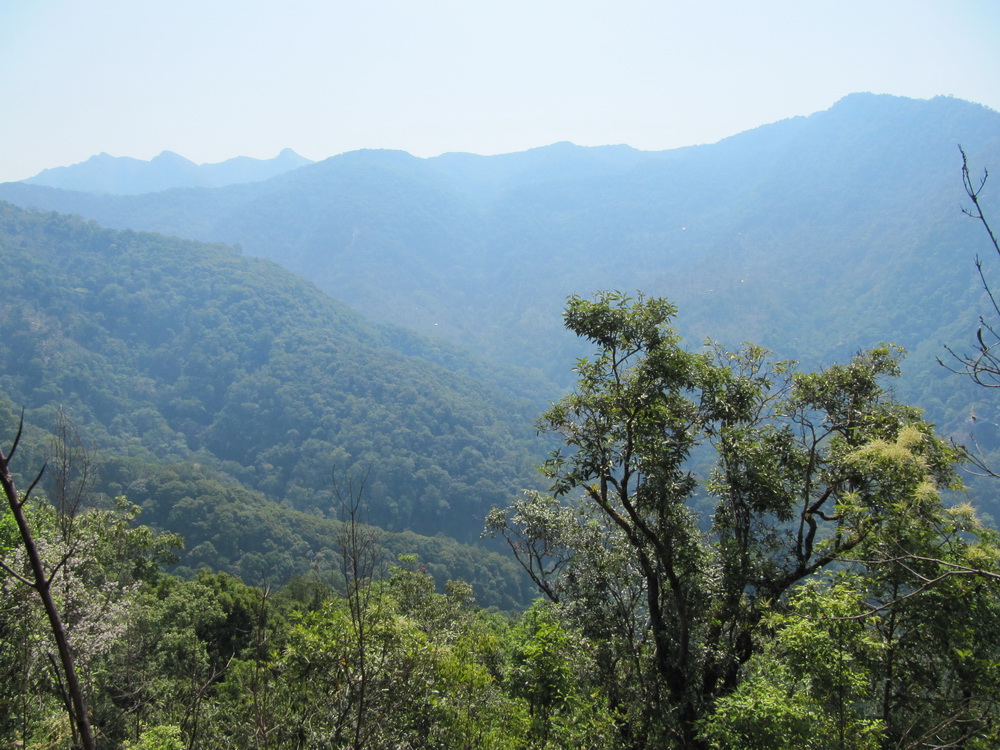
Below is a photo of a simple processing facility in Cha Wang Shu. This is where we made tea this spring.
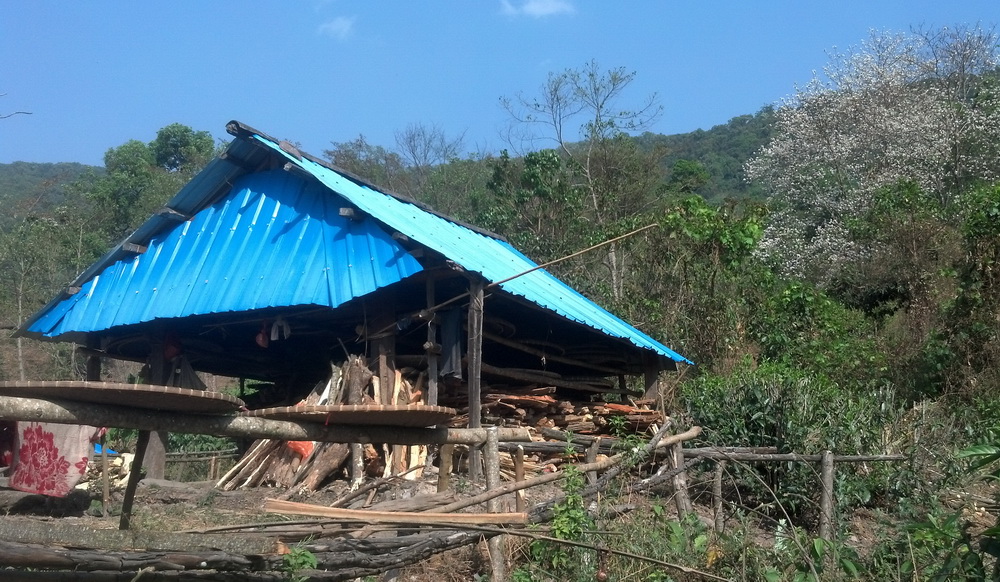
Here is one of the bigger trees in Cha Wang Shu. Again, the tree had been previously cut back and then subsequently left untended.
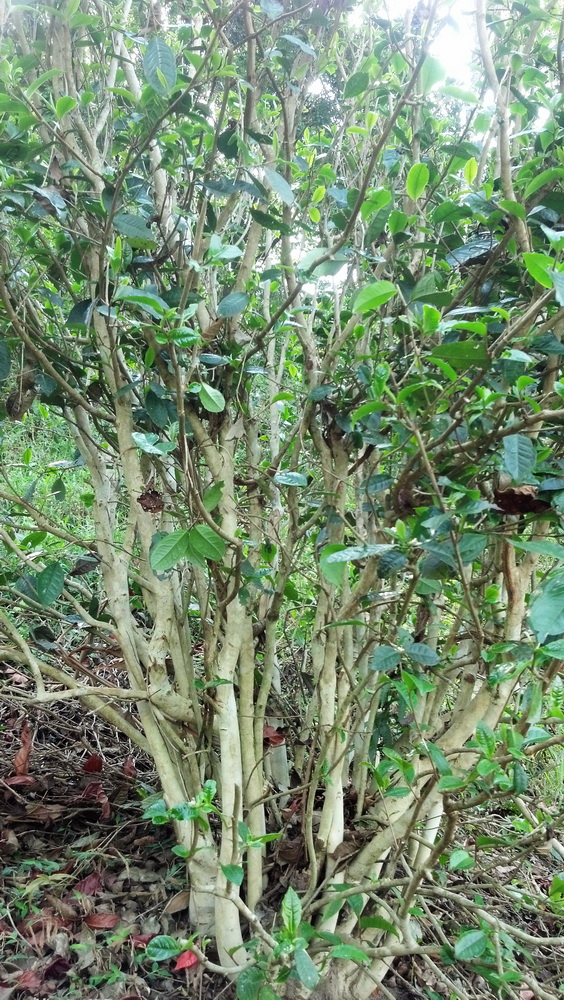
The scenery around Gua Feng Zhai is among some of the most pristine in the Six Famous Tea Mountains area, not least because of it’s remoteness. Typical tea fields here are at altitudes of 1,600-700 metres.
